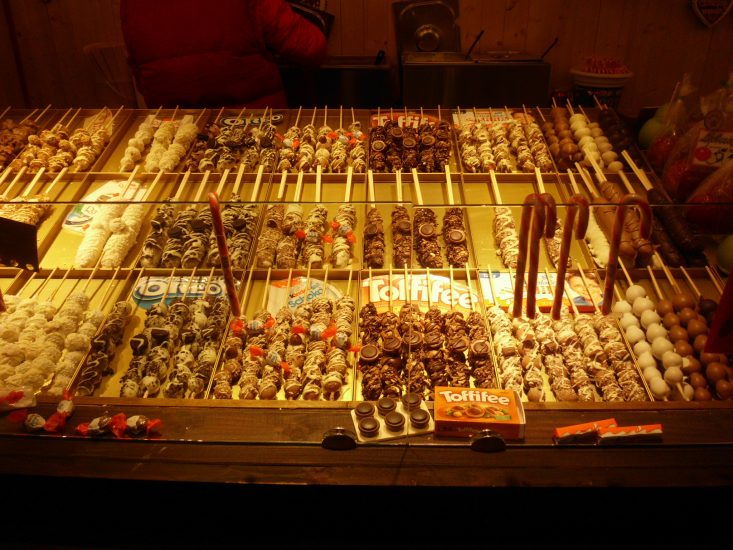
Navigating Flavour at the Christmas Market
Volker Bach looks at branded foods as guideposts and guarantors of quality
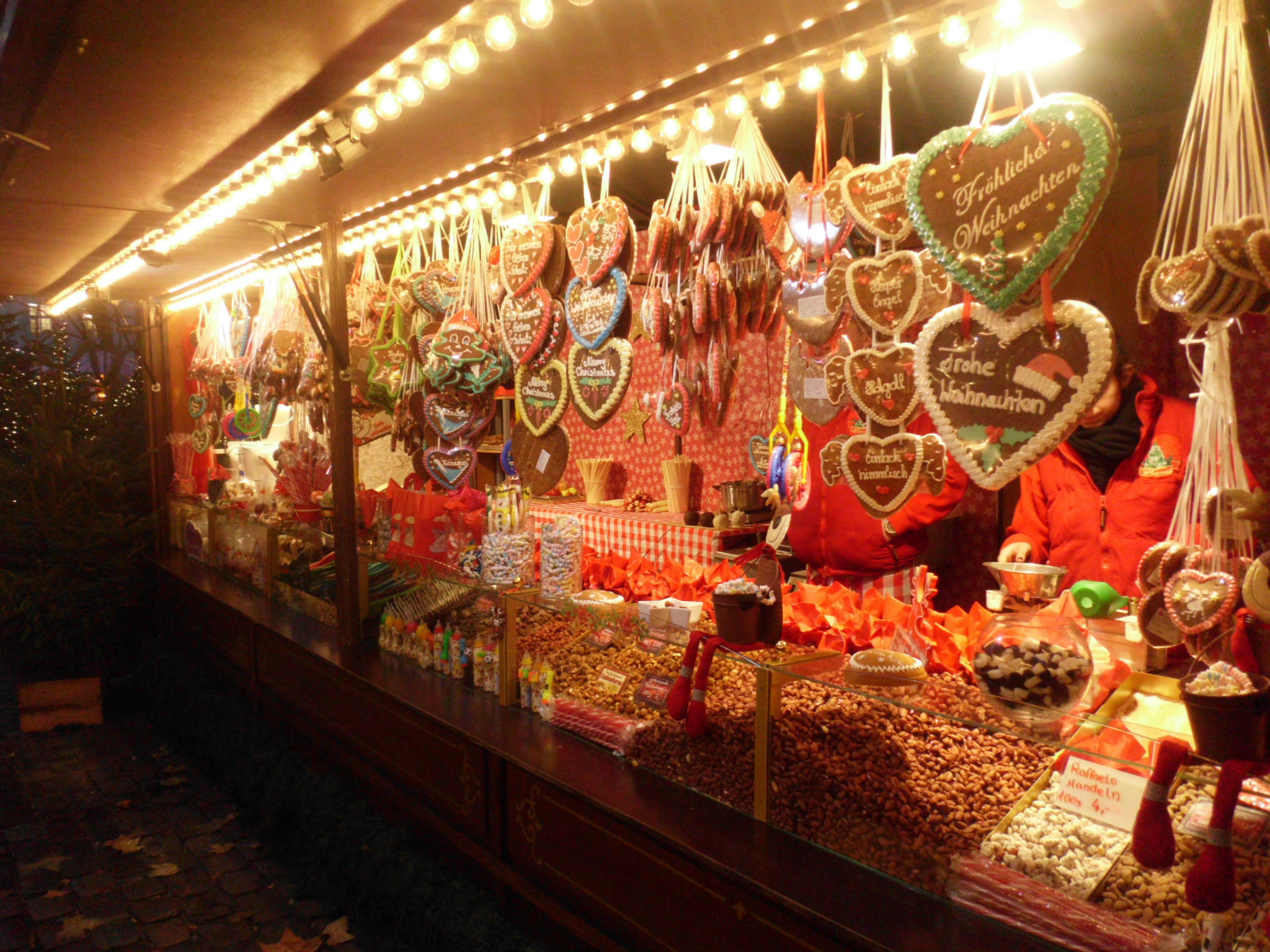
Christmas fairs have a long tradition in Germany. Originally, they existed to provide markets for rural buyers when their pockets were at their fullest. Christmas, then as now, was a religious holiday, but not very. The markets were there to shop, but also to have fun, to enjoy small luxuries and to make money from people who didn’t know any better. They still are.
What makes Christmas markets so attractive, though, is the wide range of small pleasures they offer to people of all ages. Street food of all kinds competes for attention with the traditional sweet stalls offering chocolate-coated fruit, freshly candied nuts, gingerbread, and the products of industrial chemistry united in eye-catching displays of baroque plenty.
Most food stalls prepare foods in full view, and watching the practised skill and economy of movement involved can be a greater joy than eating the results. Pride and inventiveness are also on display at confectioners’ stalls. Marzipan fruit is now common enough to sell in supermarkets and vendors have moved on from the orchard to the toolbox.

Artisanal Schokoküsse are another popular novelty. The cultural and linguistic background of this chocolate-coated marshmallow confection deserves an article of its own, but normally, the common Schokokuss is a cheap mass-market article. These are not. They are made freshly in small batches and sold in a variety of flavours to mix and match.
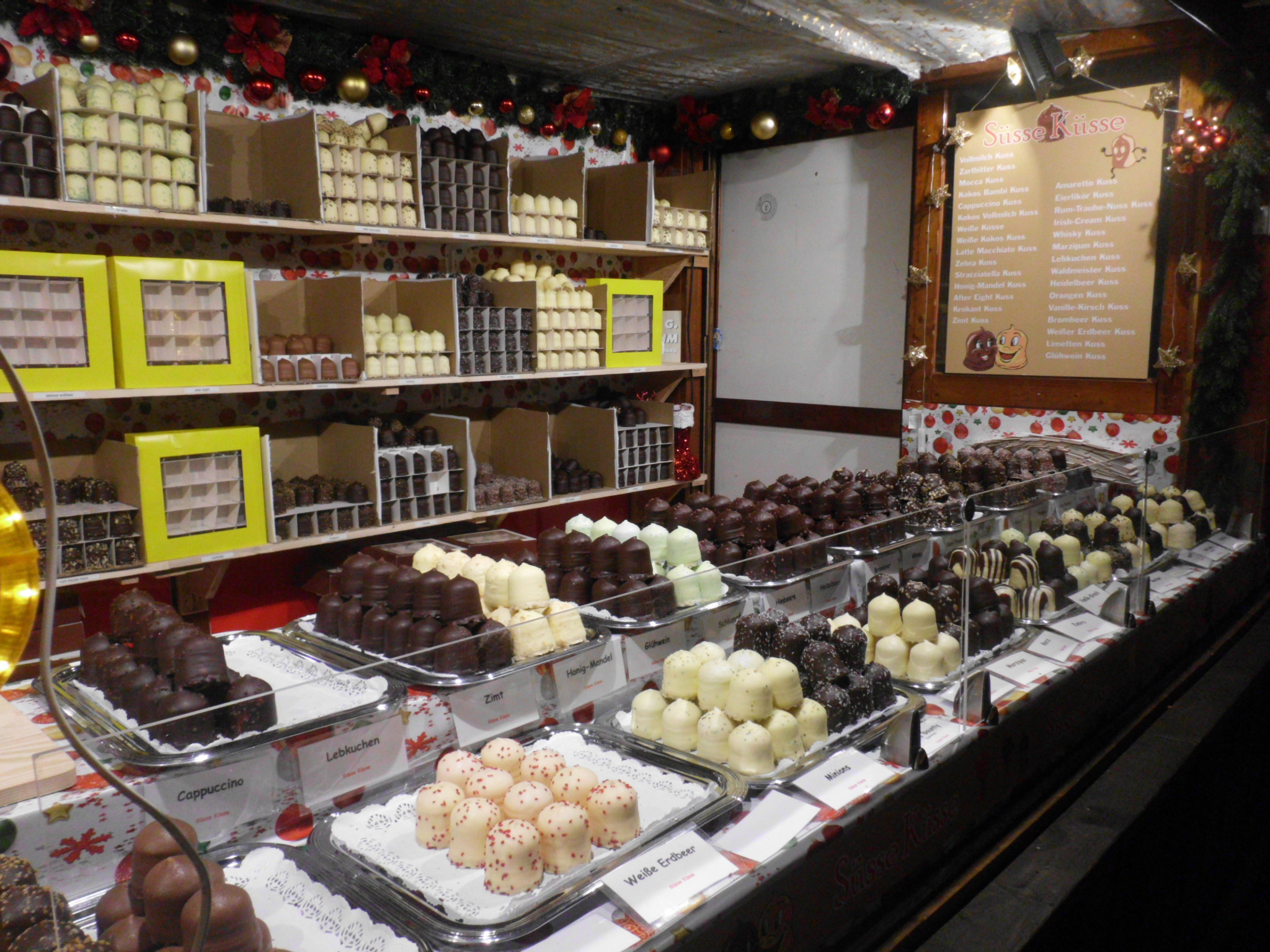
Along with the usual suspects – amaretto, strawberry, mocha, or coconut – the 30-odd flavours include not just surprising ones such as woodruff or gingerbread, but also some identified by popular brands. Buyers can take home After Eight (mint and chocolate) or Rafaello (coconut and almond) Schokoküsse, or even Minions ones which are greenish yellow and taste overwhelmingly sweet.
Familiar brands also show up in many other places at the market. Chocolate-dipped fruit have industrially produced sweets added to their coating and the fact is proudly displayed.
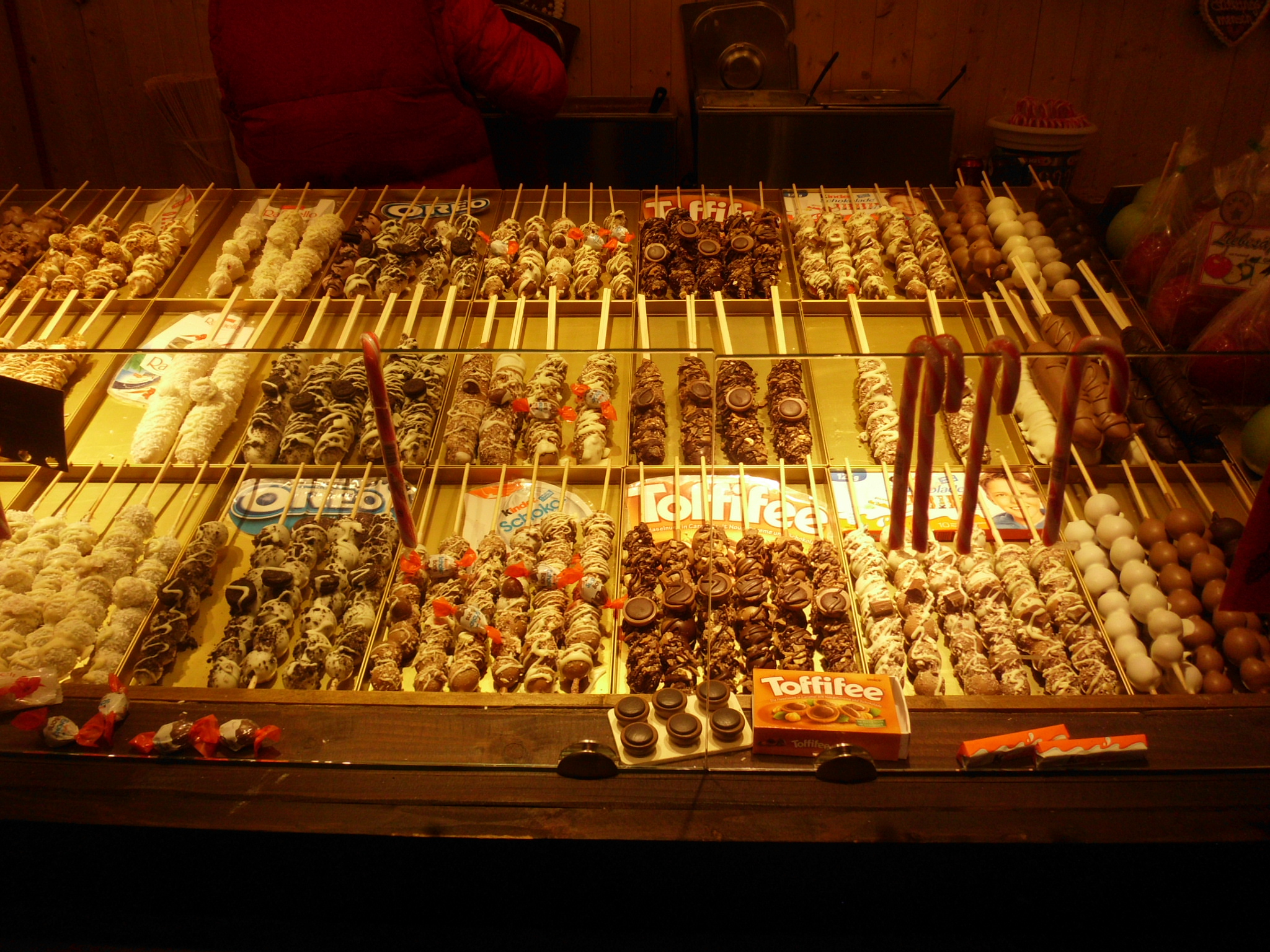
Much the same is true for crepe stalls. Crepes have become a staple street food wherever Germans gather to celebrate, and makers compete on the variety of flavourings. Stalls have gone from a modest few to twenty or more varieties.
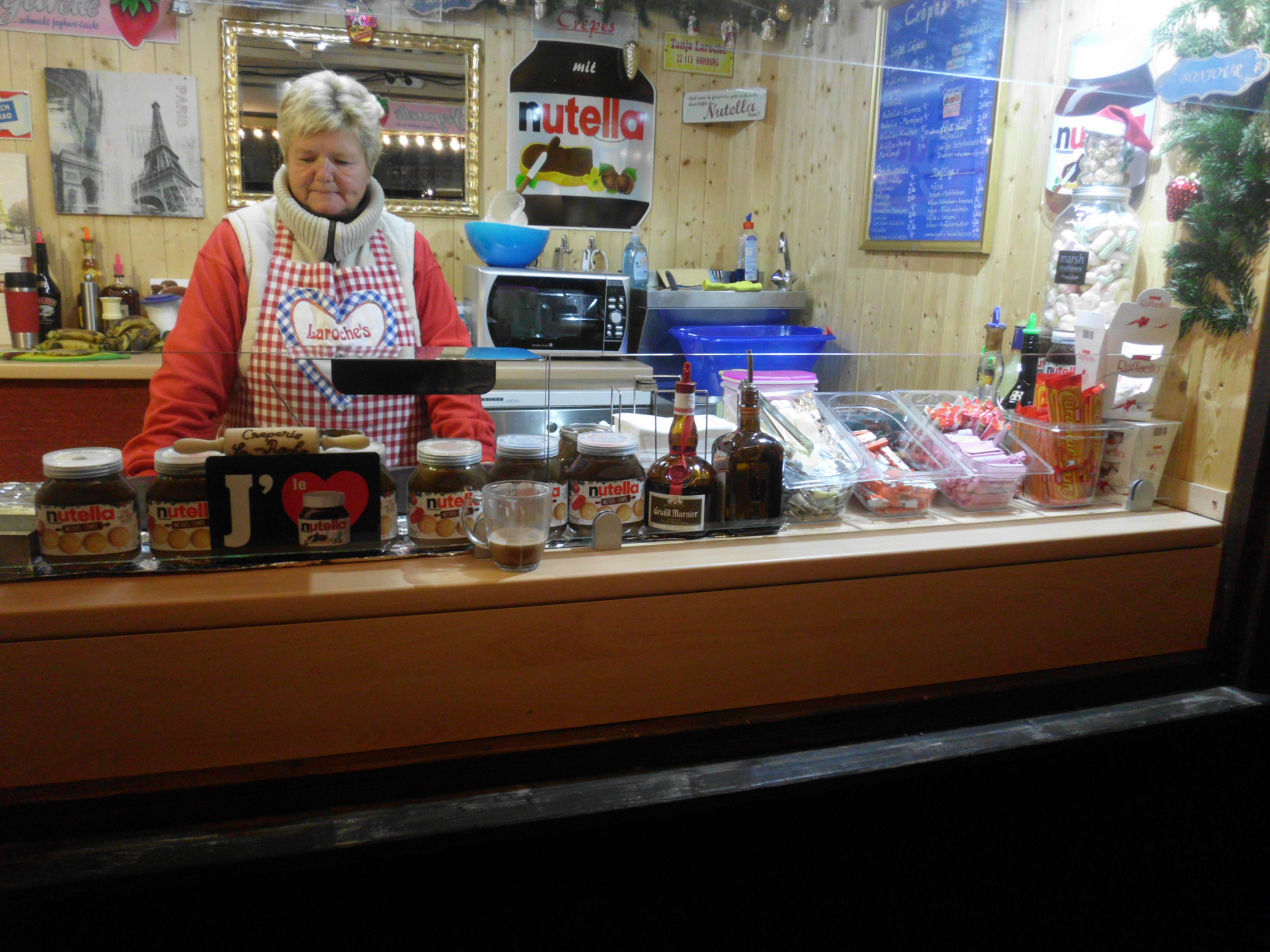
This is not a new phenomenon. Reliable quality was a selling point for industrial foods when customers could trust the packaging even where they didn’t trust the seller. Its comeback amid mock-historic nostalgia for a world of simple pleasures is mostly due to the pressure to offer ever greater variety. There is only so much you can do with crepes or chocolate fruit before your customers get confused. The fact that people will still trust the brand name both as a guidepost to flavours and as a guarantor of quality is something that supporters of local business and artisanal authenticity should take note of, though.
All text and photographs © Volker Bach 2016. Images taken with permission of the vendors and people depicted.
